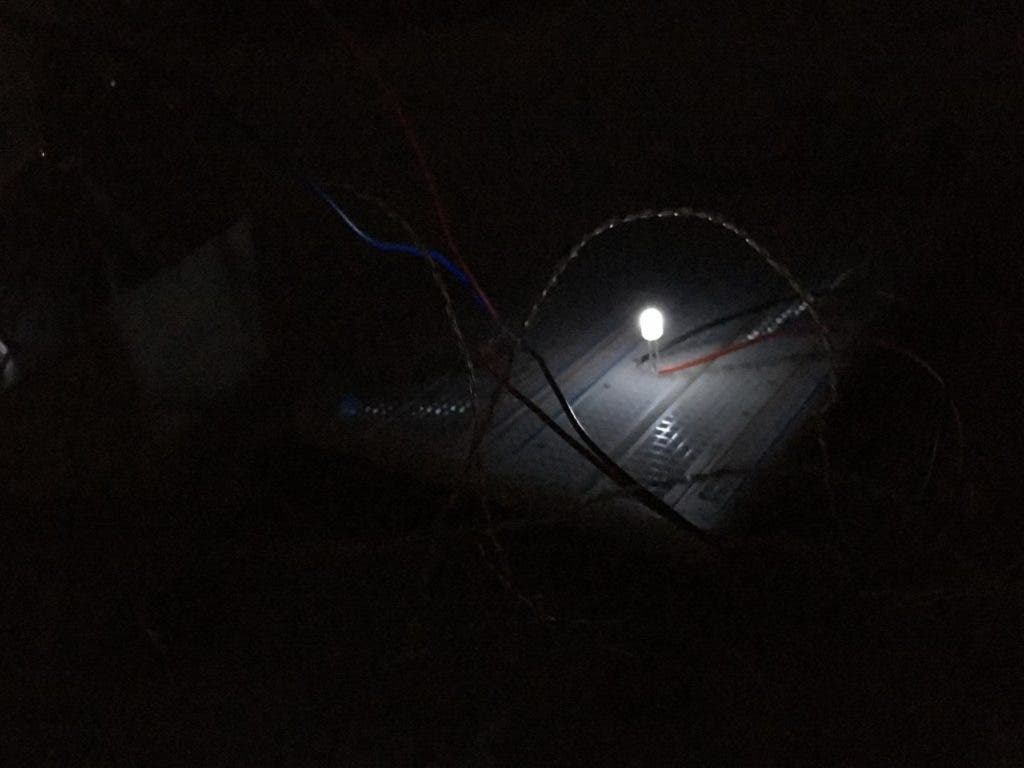
Solar power is growing at breakneck speed in markets all around the world, and is already cheaper than the average wholesale electricity price. That’s encouraging given our climate emergency.
The thing about solar energy, however, is that it only works when the sun is up — go figure. But it is also possible to also draw power at night, albeit in relatively minute amounts.
In a new study, researchers demonstrate an innovative device that harnesses the temperature difference between radiative bodies and the atmosphere at night. The power was enough to turn on a small LED light, making it suitable for applications in remote locations and just about anywhere where some power is required at night.
Remarkably, the device is able to generate electricity at night, when solar cells don’t work,” says lead author Aaswath Raman, who is an assistant professor of materials science and engineering at the University of California, Los Angeles.
But how is this all even possible?
Solar cells generate electricity by absorbing photons through a semiconducting material, which releases electrons that are harvested by electrodes fitted onto the back of the cell. When there isn’t any sunlight, solar power can still be utilized by storing it in batteries for later use.
Batteries, however, can be very expensive, so it doesn’t make sense to employ them in certain applications, such as in very remote locations where you only need a bit of electricity to power some sensors, antennas, or small lights.
Instead of harnessing photons, the researchers exploited radiative cooling, the process by which a body loses heat by thermal radiation. Any sky-facing surface will lose heat to the atmosphere, shooting thermal radiation into space, eventually reaching a cooler temperature than the surrounding air. This is why, for instance, you will see frost form on vegetation during some cold nights, despite the fact that the temperature outside is above water’s freezing point. By harnessing this temperature difference, it is possible to generate electricity.
Raman and colleagues, including researchers at Stanford University, tested a device that harnesses radiative cooling on a rooftop under a clear December sky. The low-cost device consists of a polystyrene enclosure covered in very light-weight aluminized mylar that minimizes the amount of thermal radiation that escapes.
The device was placed on a desk one meter above the roof’s surface, drawing heat from the surrounding air and releasing it into the night’s sky through a black emitter.
When the thermoelectric module was connected to a voltage boost converter, it was capable of turning on a low-power white LED. Over six hours, the researchers measured a power output of 25 milliwatts per square meter.
For comparison, a typical solar cell will generate about 150 watts per square meter in peak conditions, almost 10,000 more than the thermal radiative cooling device.
However, Raman says that the amount of electricity that can be generated per unit area during the night can be increased by an order of magnitude with some upgrades. And since it is made from very simple components that can be purchased off the shelf, the researchers believe there are many applications for which their device can find practical use. It can, for instance, operate in very hot, dry climates and could also act as a radiative cooling component.
“Our work highlights the many remaining opportunities for energy by taking advantage of the cold of outer space as a renewable energy resource,” says Raman. “We think this forms the basis of a complementary technology to solar. While the power output will always be substantially lower, it can operate at hours when solar cells cannot.”
The findings were reported in the journal Joule.






